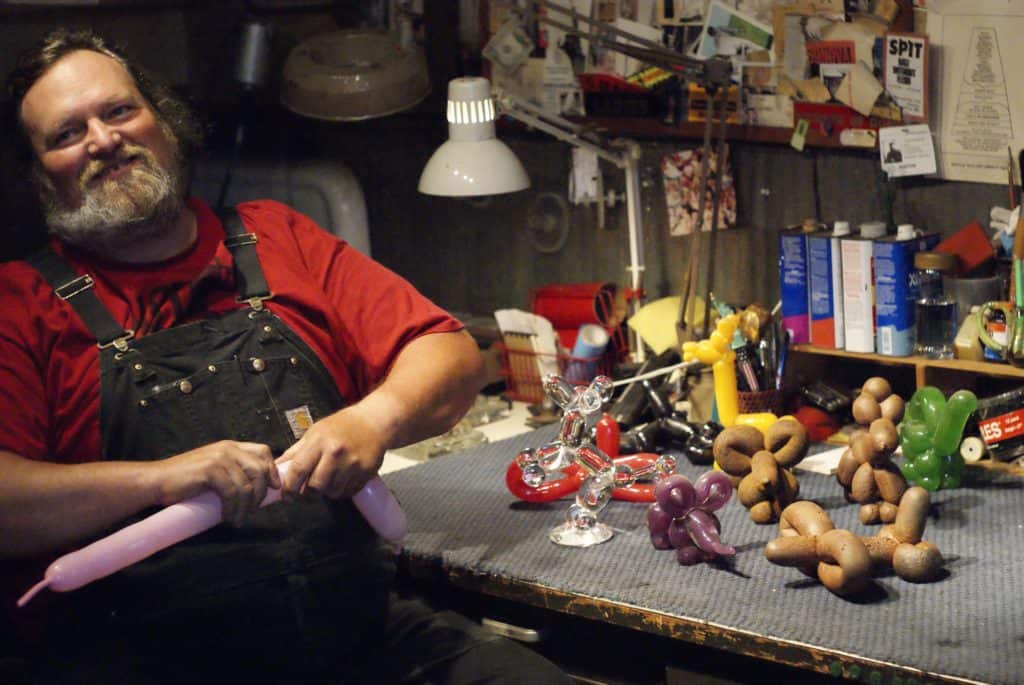
The return of summer weather brings children back onto soccer field and playgrounds. In the sunshine, the children at Carroll Park wait excitedly for Peter Waldman, known to many as Balloon Pete.
Pete spends time in the park most afternoons, creating colorful latex animals and toys for the children that play there. In fact, he’s become “pretty darn famous with the four-year olds,” he says.
But like so many performers and artists, there’s more to Pete than meets the eye.
One morning at the end of May, settled in the dimly lit living room of his quirky little house near Red Hook’s waterfront, Pete opened up about the life behind the balloon man.
Background
As he spoke, he stood to wind up a large clock made entirely of glass. It’s one of his own pieces. In fact, art work is scattered all over his living room – plastered on walls, leaning against the wall, scattered around his desk. But that’s getting too far ahead.
Growing up on farms all over the Midwest, Pete has often found it hard to pinpoint exactly where “home” was.
“I’m a midwestern mutt,” he jokes. “My parents kept moving and I kept finding them.”
He graduated from college at Millersville University in Pennsylvania with a degree in industrial arts education and then moved around from place to place, following jobs and personal whims.
In 1992, Pete decided, “ I would follow my bliss on the glassmaker’s trail.” He moved to Corning, New York, which was, as he recalls, “a sort of glass Mecca.” In 1996, Pete moved to Red Hook, following a teaching job at Urban Glass – Intro to Glassblowing.
Though he’s held a number of different jobs in the area, Pete has remained in Red Hook ever since, doing this and that.
From time to time, he picked up work moving large art pieces. He worked at Heller Gallery in New York for seven years before getting burnt out. He spent the next three years searching. Soon after, Pete turned to his art to make a living.
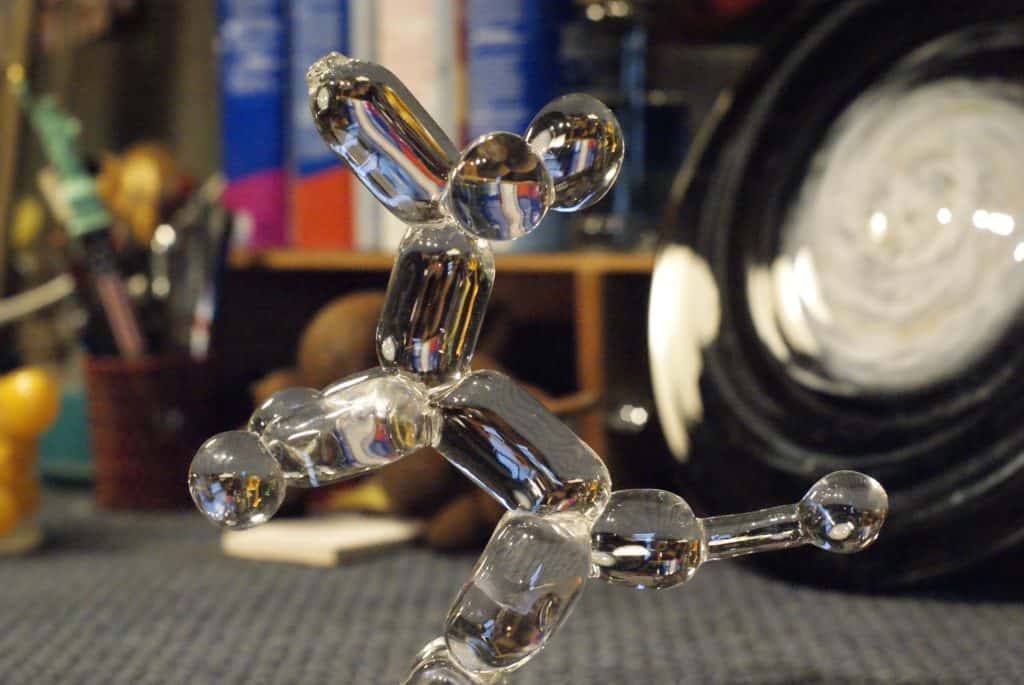
Ballooning
When the weather is nice, Pete – clad in colorful overalls and carrying a seemingly endless supply of floppy balloons, sets up his chair in the center of the park. Children come to make their requests and leave tips in the bucket at his feet.
An airplane, a cat, a dinosaur, a dog, an elephant, a heart, a sword. He can list dozens of designs in alphabetical order off the top of his head. With each request, Pete fills up a balloon and starts twisting, barely glancing at the balloons as his hands work. It’s second nature.
A little girl asks Pete, “How do you do this?”
He laughs and responds, “I’ve been doing this 40 years. What have you been doing?”
Pete’s passion for ballooning started early. At 14 years old, his family friend, David Sharps, visited their farm in Minnesota. He would play an integral role in Pete’s life.
“David taught me ballooning, unicycling, and juggling,” Pete explained, adding, “I don’t do that anymore; it’s work. Just balloons.”
As Pete travelled, his balloon passion travelled with him. He would take his talent into the street to earn money to survive on. Even today, a large percentage of his income comes from making balloons in the park and during private parties.
The balloon man is outspoken, gregarious, immodest, and blunt – clearly at home in the park, which he refers to as “his domain.” Pete teases the children and they tease him in return. If a child is rude to him, Pete is rude right back. When they’re sweet, he’s outright silly.
Accustomed to this role, Pete’s little lyrical rhymes roll of his tongue and make the children laugh. “Which pink do you think?” he asked one little girl in a sickly sweet voice, mimicking her gentle and high-pitched voice.
“You’re silly,” she replied with a skeptical look about her.
Over the years, the Balloon Man has seen it all and has taken to carrying balloons with him almost everywhere he goes. If a child is crying in the store, Pete makes his way over with a balloon.
“It’s tough to be a superhero,” he joked. “Parents don’t understand. Emotions are like freight trains. They can’t stop on a dime.”
When a crying child walked up to Pete in the park, he patiently waited for her to calm down and explain what she wanted. By the time he finished, he sent her off with more smiles than tears.
“It’s nice to add color to the park and bring joy to people,” he reflects.
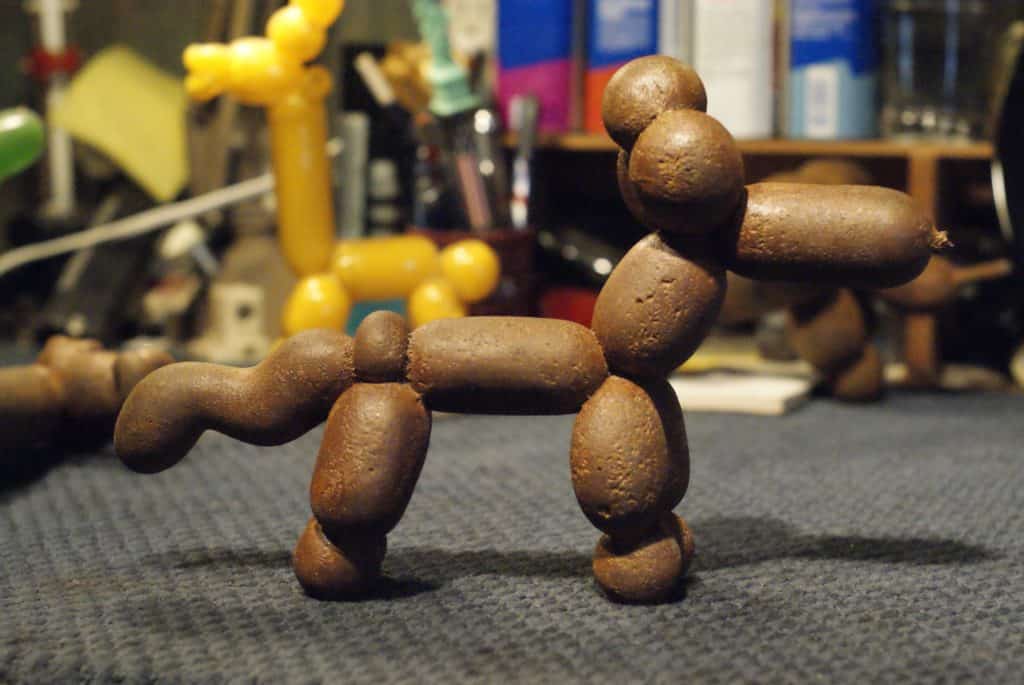
GLASS
The same year Pete learned ballooning, something else happened that would impact the direction of his life’s work.
“As a young boy in the garage, I got a propane torch and a little bubble of glass and blew it so thin that it popped. And the pieces fell to the ground like snow,” Pete recalled.
He didn’t pick up glass work again until his time at Millersville University, when he began to study the technical arts.
Over the years, he has undertaken a number of major projects. Red Hookers know Pete as the man who created the Red Hook sign that used to hang on the Golten Marine building on the corner of Hamilton and Van Brunt. He recalls getting up on a plank set between two step ladders to try and restring the lights. “I was willing to risk my life for that sign,” he says.
Pete’s artistic projects range in focus. He creates large glass disks with dark blues and blacks swirled together with white to represent galaxies. He hopes that people will look at them and “contemplate where they are in the universe.”
Perhaps unsurprisingly, Pete’s 40 years ballooning led him to begin playing with their forms in glass, and more recently, in iron.
Another project began when he first moved to Red Hook, back when he lived with his old friend David Sharps in the Water Front Museum. Pete became inspired by a late night ride around the Statue of Liberty. He has spent the subsequent years recreating the image of Lady Liberty in different materials like glass or even dollar bills.
And then there are the glass clocks. With his first one sold years ago and the second one sitting in his living room, Pete contemplates a third clock. The pieces, done entirely of glass, have presented Pete with an exciting challenge. Clearly proud of the work, he describes the research and complete precision necessary to pull it off.
“It’s the quieter, contemplative side of my work,” he explains, in contrast his glass with his balloons.
Recently, the bulk of Pete’s creative work takes place in Minnesota, where he has been able to set up a large studio space in a barn located on his parents’ farm.
He travels between his home and theirs, feeding his different passions.
“I recharge my batteries in both places,” Pete mused. “I’m industrious and creative out there and here I socialize and experience the ebb and flow of energy.”
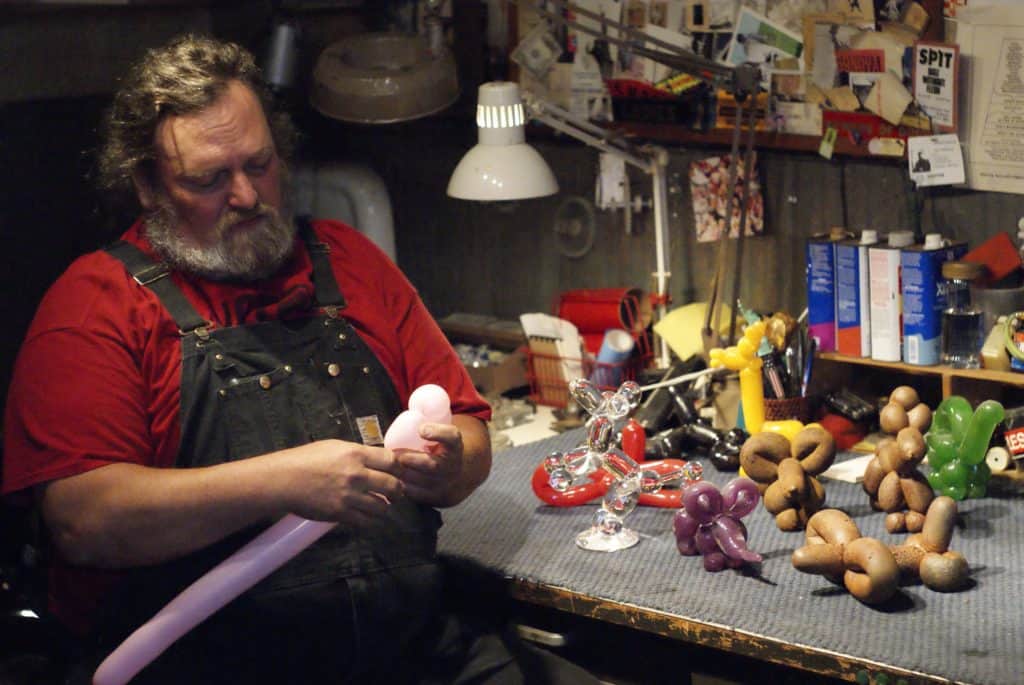
RED HOOK
Though he is not always in Red Hook, Pete has formed an attachment to the neighborhood he’s lived in for 20 years. “Back in the day, I used to be able to name all the people down the bar at Sunny’s. The artists here all knew one another,” he explained before adding, “I don’t want to reminisce about the past too much.
But he continued, “Coming here 20 years ago, I knew this place would get overrun eventually.”
He has lost friends here, gotten stuck in a rut here, and watched as the neighborhood steadily gave way to change here. However, he loves it all the same. “I don’t want to reminisce about the past too much,” he noted a second time, laughing.
The glass clock Pete wound hours earlier had stopped turning.
“The things I like most about Red Hook are the things that don’t change. We’re still by the water. My neighbors are still my neighbors,” Pete said with a smile. “It is my home. Red Hook is my home.”

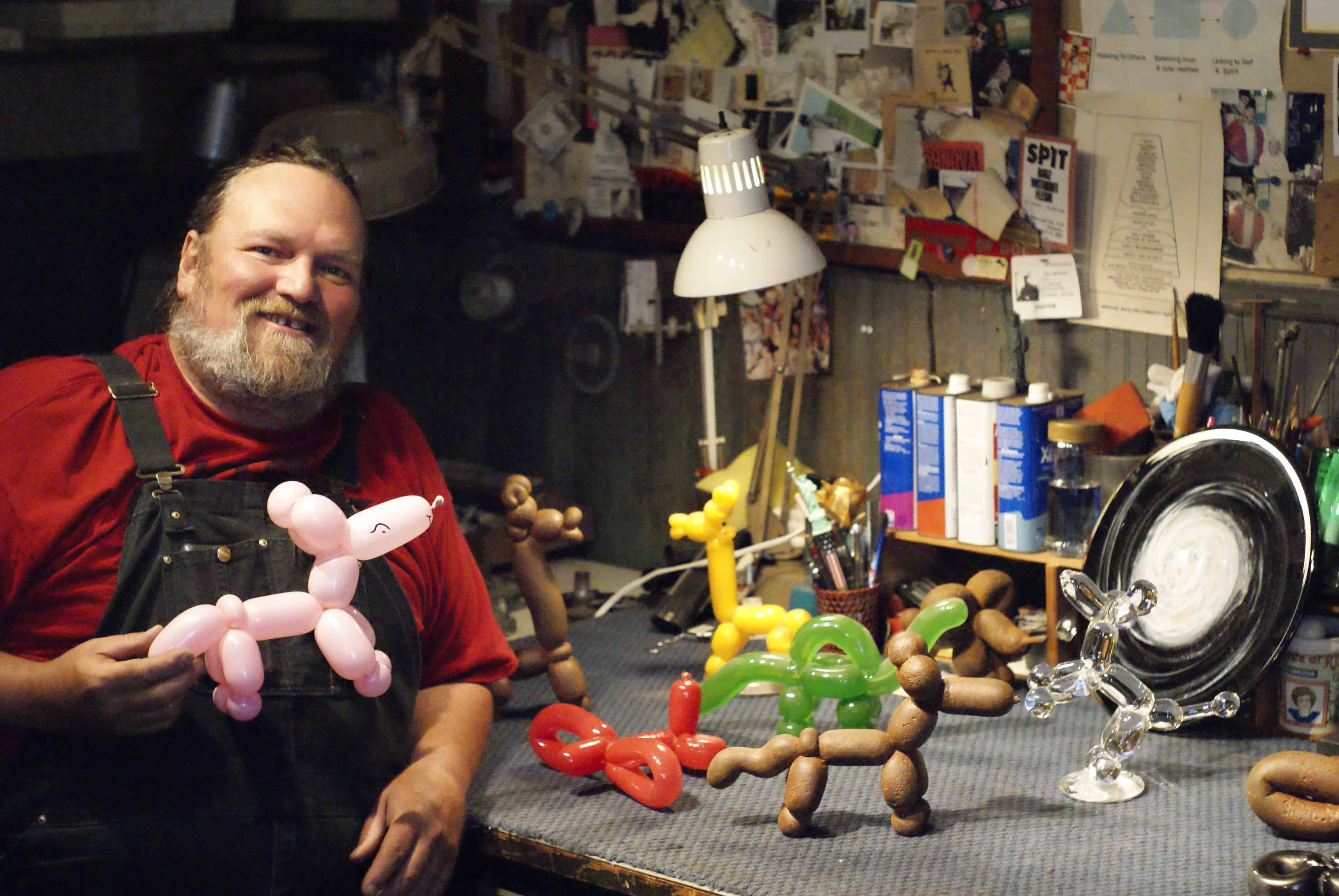








2 Comments
What a great article about my friend, Pete. He is well loved by many in Brooklyn. I know I miss him when he travels to Minnesota and just wait for him to return to where he belongs, right here in Red Hook and Carroll Gardens.
Great story my friend. Looking forward to our next visit.